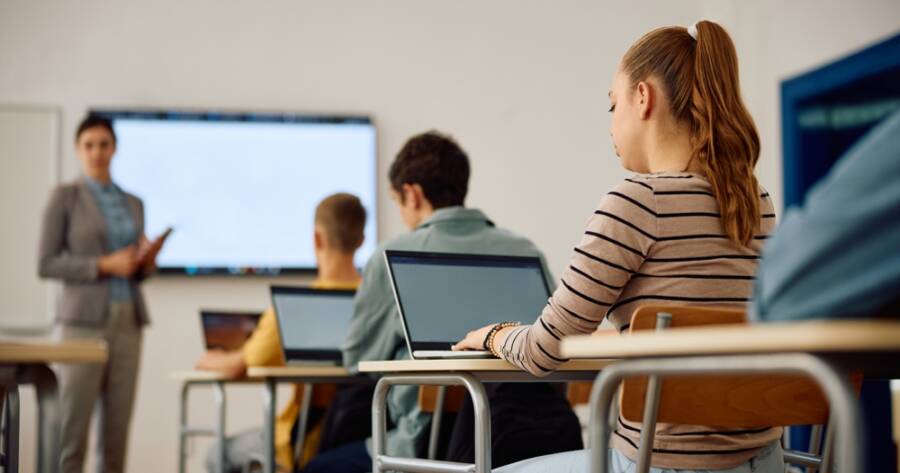Education has always evolved with the tools of its time, from chalk and slate to tablets and artificial intelligence. Technology isn’t just changing how we teach; it’s transforming how students think, collaborate, and create. The classroom is no longer limited by four walls or fixed schedules. Modern learning tools make education more interactive, inclusive, and personalized than ever before, empowering both teachers and students to learn, adapt, and innovate in new ways every day.
The Digital Shift: From Traditional Tools to Tech-Driven Learning
For generations, the chalkboard symbolized the heart of classroom instruction. Lessons were written, erased, and rewritten—one idea at a time. But as technology entered education, teaching evolved beyond static notes and one-size-fits-all lectures. Overhead projectors gave way to interactive whiteboards, and paper handouts turned into digital slides and online resources.
Today’s classrooms are vibrant ecosystems powered by devices, apps, and cloud-based collaboration. Students can watch a video, join a discussion, and submit work all from the same screen. Teachers can adapt lessons in real time, catering to individual learning needs. The shift isn’t about replacing tradition—it’s about expanding what’s possible in the pursuit of deeper, more accessible learning.
Personalized Learning for Every Student
Technology has made individualized education more achievable than ever. Adaptive platforms and learning apps analyze student progress, identifying strengths and gaps to adjust lessons automatically. This allows teachers to meet students where they are, ensuring that no one is left behind—or held back by a pace that doesn’t fit them.
Personalization also gives students more ownership over their education. Tools like online modules and gamified quizzes let learners progress independently, revisit difficult concepts, and build confidence through mastery. Whether it’s a struggling reader using an interactive e-book or a math prodigy exploring advanced challenges, technology supports every learner’s unique journey.
Collaboration Beyond the Classroom Walls
Learning is no longer confined to a single space or time. With digital collaboration tools, students can work together across classrooms, schools, or even continents. Platforms like Google Workspace, Padlet, and virtual discussion boards allow for group projects, peer feedback, and real-time sharing that mimic modern workplaces.
This global connectivity also introduces students to diverse perspectives. A class in California can exchange ideas with one in Kenya, deepening understanding of culture, communication, and empathy. Technology creates classrooms without borders—where learning extends far beyond textbooks, preparing students for a world defined by teamwork and connection.
AI and the Rise of Smart Learning Assistants
Artificial intelligence is reshaping education in remarkable ways. Tools like ChatGPT, adaptive tutors, and AI-driven grading systems are helping teachers save time, personalize instruction, and create more engaging experiences. For example, AI can suggest lesson enhancements, generate practice questions, or offer real-time feedback to students as they learn.
While some worry that AI might replace the human element, its true strength lies in partnership. When used thoughtfully, AI enhances—not replaces—the teacher’s role. It handles repetitive tasks, freeing educators to focus on mentoring, creativity, and emotional connection. Smart assistants can’t inspire passion or empathy, but they can amplify the teacher’s impact in powerful ways.
Bridging Gaps in Access and Inclusion
One of the greatest promises of educational technology is equity. Digital tools can make learning more inclusive for students with disabilities, language barriers, or limited resources. Text-to-speech, closed captions, translation software, and screen readers open new doors to accessibility that traditional classrooms often lacked.
Online learning platforms also reach students in remote or underserved areas, providing access to quality education where it was once unavailable. While challenges remain—such as internet access and digital literacy—technology continues to level the playing field. When inclusivity is built into design, technology becomes not just a tool for learning, but a force for fairness.
Balancing Innovation With Human Connection
With all the advancements in EdTech, one truth remains: meaningful learning depends on relationships. Screens can deliver content, but they can’t replace empathy, encouragement, or the spark of inspiration that comes from human connection. Teachers remain the heart of education, guiding students through critical thinking, communication, and character development.
The best classrooms use technology as a bridge, not a barrier. Blending digital tools with personal connection creates a learning experience that’s both modern and deeply human. In that balance lies the future of education, one where technology enhances what teachers do best: nurture potential.
Teaching for Tomorrow, Inspired by Today
From chalk dust to code, every educational innovation has shared the same goal: to make learning more engaging and effective. Today’s tools are smarter, faster, and more powerful than ever, but the heart of education hasn’t changed. It’s still about growth, curiosity, and connection.
Technology doesn’t define great teaching—it empowers it. As classrooms continue to evolve, educators stand at the center, blending innovation with inspiration to prepare students not just for the world ahead, but for the joy of lifelong learning.

